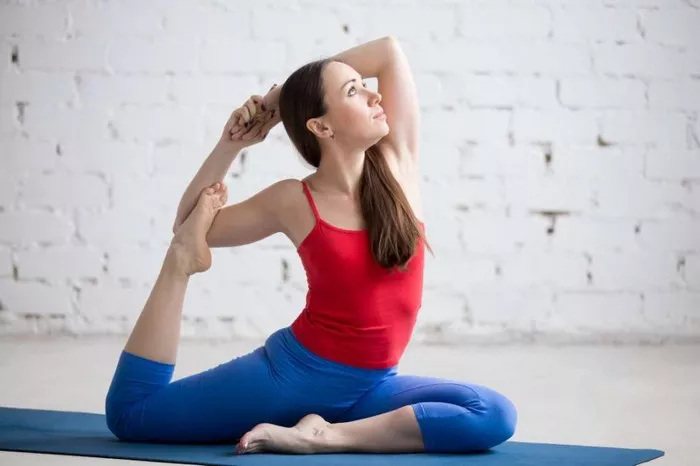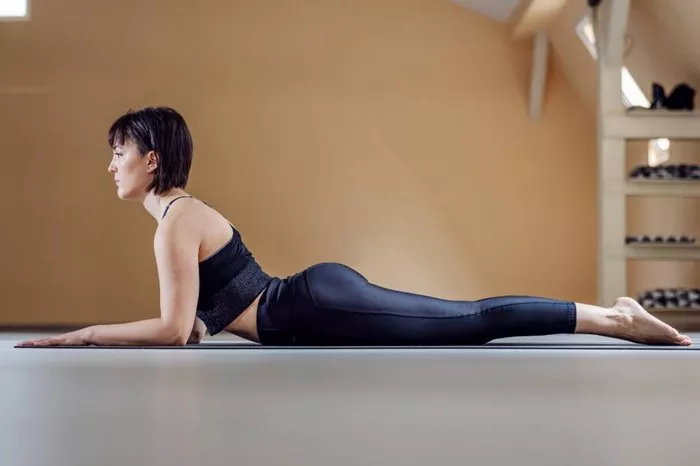Yoga has grown tremendously in popularity, with practitioners worldwide turning to it for its physical, mental, and spiritual benefits. Within the vast field of yoga, two terms frequently arise: asana and vinyasa. These terms are often used interchangeably or misunderstood, but each represents distinct concepts in yoga practice. This article aims to clarify the differences between asana and vinyasa, delving into their definitions, roles in yoga, and the benefits they offer. By understanding the unique functions of asana and vinyasa, practitioners can deepen their yoga experience and choose practices that best align with their goals.
Understanding the Basics: Asana and Vinyasa
What is Asana?
In its simplest form, asana refers to the physical postures or poses practiced in yoga. The word asana comes from Sanskrit, meaning “seat” or “to sit down,” which originally referred to the seated postures used for meditation in ancient yogic practices. Over time, however, asana has evolved to encompass a vast array of poses, each serving a different purpose and targeting various areas of the body and mind.
Asanas are the physical foundation of most yoga practices. They can be categorized into different groups based on their types and the benefits they provide:
Standing Poses: Such as Mountain Pose (Tadasana) and Warrior Pose (Virabhadrasana), which build strength and balance.
Seated Poses: Like Lotus Pose (Padmasana) and Staff Pose (Dandasana), which improve flexibility and focus.
Inversions: Such as Headstand (Sirsasana) and Shoulderstand (Sarvangasana), which promote circulation and mental clarity.
Twists: Like Half Lord of the Fishes (Ardha Matsyendrasana), which aid digestion and spinal flexibility.
Backbends: Such as Cobra Pose (Bhujangasana) and Bridge Pose (Setu Bandhasana), which open the chest and strengthen the spine.
Forward Bends: Like Forward Fold (Uttanasana) and Child’s Pose (Balasana), which calm the mind and stretch the back.
Each asana has specific alignments, physical requirements, and mental benefits. Practicing asanas helps improve strength, flexibility, and mental focus.
What is Vinyasa?
Vinyasa is a term that describes a dynamic flow of yoga poses synchronized with the breath. Unlike asana, which refers to specific, static postures, vinyasa refers to the way in which those poses are linked together in a fluid, continuous movement. The word vinyasa comes from the Sanskrit roots vi, meaning “in a special way,” and nyasa, meaning “to place.” Vinyasa yoga can be thought of as “placing the poses in a special sequence,” allowing practitioners to move from one asana to another smoothly and with intention.
In a typical vinyasa sequence, practitioners transition through various postures with a focus on breathing deeply and evenly, often using the ujjayi breath, a type of controlled breathing that helps anchor the mind and body. Common vinyasa movements include:
Sun Salutations (Surya Namaskar): A flowing sequence of poses, including Forward Fold, Plank, Chaturanga, Upward Facing Dog, and Downward Facing Dog. This sequence is often used as a warm-up in vinyasa classes and helps create heat, increase flexibility, and improve coordination.
Transition Poses: Certain poses, like Plank to Chaturanga to Upward-Facing Dog, act as transition poses in vinyasa sequences. These are synchronized with the breath and are the backbone of the vinyasa style.
Breath-to-Movement: Every pose in vinyasa yoga is typically synchronized with either an inhale or an exhale, promoting a rhythm that helps maintain mental focus.
Vinyasa yoga is sometimes called “flow yoga” because of the continuous movement from one pose to another, allowing for a sense of fluidity and grace. It can vary in intensity from a slow, gentle flow to a fast-paced, power-packed routine, depending on the practitioner’s level and goals.
Key Differences Between Asana and Vinyasa
While both asana and vinyasa are essential components of many yoga practices, they serve different purposes and offer unique benefits. Here are the primary distinctions:
1. Static vs. Dynamic Practice
Asana: In a traditional asana practice, each pose is held for a set period. The emphasis is on holding the posture with proper alignment, which promotes strength, flexibility, and stability. Holding each asana allows practitioners to settle into the pose, focus on their breath, and feel the stretch or tension in the muscles and joints.
Vinyasa: Vinyasa is a dynamic practice where each pose flows seamlessly into the next with minimal holds. Instead of remaining static, the body is constantly moving, and the breath guides each transition. Vinyasa creates a rhythm, and the continuous flow builds heat in the body, enhances cardiovascular health, and offers a moving meditation experience.
2. Focus on Individual Poses vs. Sequence of Movements
Asana: In a typical asana-centered practice, each pose is performed as an isolated posture. Practitioners focus on alignment, breath, and mindfulness within each pose. This approach is common in Hatha yoga, where each asana is practiced one at a time, with an emphasis on holding and experiencing the full benefits of each posture.
Vinyasa: Vinyasa emphasizes the sequence rather than individual poses. It’s about the journey from one pose to another and the connection between each movement. The sequence itself is integral, and poses are often modified to create a seamless flow. This approach offers a unique challenge, as it requires mental and physical agility to stay present in each transition.
3. Breath Awareness
Asana: In asana practice, the breath is often used as an anchor to help deepen the pose and cultivate mindfulness. However, the focus is more on maintaining steady breaths throughout each pose rather than on specific breathing patterns tied to movement.
Vinyasa: Vinyasa yoga is intensely breath-focused. The practice follows a one breath, one movement principle, where each inhale or exhale is synchronized with a change in posture. The breath becomes the guide, dictating the pace and rhythm of the flow, and helping practitioners maintain focus.
4. Energy and Intensity Levels
Asana: Depending on the pose, asana practice can be intense or gentle, but it generally promotes a calm and steady energy. Holding poses can cultivate endurance, patience, and a sense of grounding. The pace is often slower, which allows for a more introspective experience.
Vinyasa: Vinyasa practice tends to be more energetic and intense due to its continuous flow. The fluid movement combined with breath control raises the heart rate, builds heat in the body, and encourages practitioners to push their physical limits. Vinyasa can be mentally challenging as it requires focus on both breath and movement.
5. Goals and Intentions
Asana: The goal of practicing asanas is to cultivate physical and mental discipline. Each pose offers unique benefits, and the process of holding asanas allows for introspection, awareness, and alignment of the body and mind. Asanas are essential in many forms of yoga that emphasize a meditative or restorative approach, like Hatha and Yin Yoga.
Vinyasa: Vinyasa aims to create a meditative flow through movement and breath. It builds endurance, flexibility, and cardiovascular health, while providing a moving meditation that keeps practitioners in the present moment. Vinyasa practices are often challenging and rewarding, making them popular among those looking for both physical fitness and mental clarity.
The Benefits of Asana Practice
Practicing asanas offers a wide range of physical, mental, and emotional benefits. Here are some of the primary advantages:
Improved Strength and Flexibility: Asanas work different muscle groups and joints, which can enhance physical strength and flexibility over time.
Enhanced Balance and Coordination: Asanas require focus on alignment and body positioning, which promotes balance and coordination. This can help prevent injuries and improve overall body awareness.
Mindfulness and Stress Relief: Holding each pose allows practitioners to focus on their breath and body, helping them develop mindfulness and reduce stress levels.
Enhanced Respiratory Health: Many asanas focus on deep breathing, which can increase lung capacity and promote respiratory health.
A Gateway to Meditation: Asana practice helps prepare the body for meditation by reducing physical discomfort and calming the mind, which can make sitting in meditation easier.
The Benefits of Vinyasa Practice
Vinyasa yoga also offers numerous benefits that cater to different aspects of well-being:
Cardiovascular Health: The dynamic flow of vinyasa raises the heart rate and promotes circulation, offering cardiovascular benefits similar to those of aerobic exercises.
Mental Focus and Presence: The combination of breath and movement in vinyasa requires a high level of concentration, which can enhance mental clarity and presence. This moving meditation can help practitioners feel more grounded and connected to their bodies.
Increased Endurance: The physical demands of vinyasa yoga build endurance and resilience, both physically and mentally.
Stress Relief: The rhythm of vinyasa and the connection with breath create a calming effect on the mind, making it a powerful stress-relief tool. The intensity of the practice also helps release tension and toxins, promoting a sense of well-being.
Weight Management: Vinyasa’s continuous movement, combined with breath work, can help burn calories and maintain a healthy weight. It also strengthens muscles and tones the body.
Conclusion
Asana and vinyasa are not opposing practices but rather complementary elements that can enhance a yoga journey. Asana focuses on building physical strength, flexibility, and alignment, while vinyasa offers a dynamic flow that cultivates cardiovascular health, mental clarity, and emotional well-being. Both forms can coexist in a well-rounded yoga practice, each providing unique benefits to practitioners at different times.
For those seeking a slower, more introspective practice, asanas may be the best option, allowing for deep engagement with individual postures. On the other hand, those who desire a more energetic, challenging, and fluid practice can find vinyasa particularly rewarding.
Ultimately, the choice between asana and vinyasa depends on your personal goals and preferences. Many practitioners find that integrating both into their regular practice provides a balanced approach to yoga, offering physical and mental benefits that promote overall health, well-being, and mindfulness.
Related Topics:























